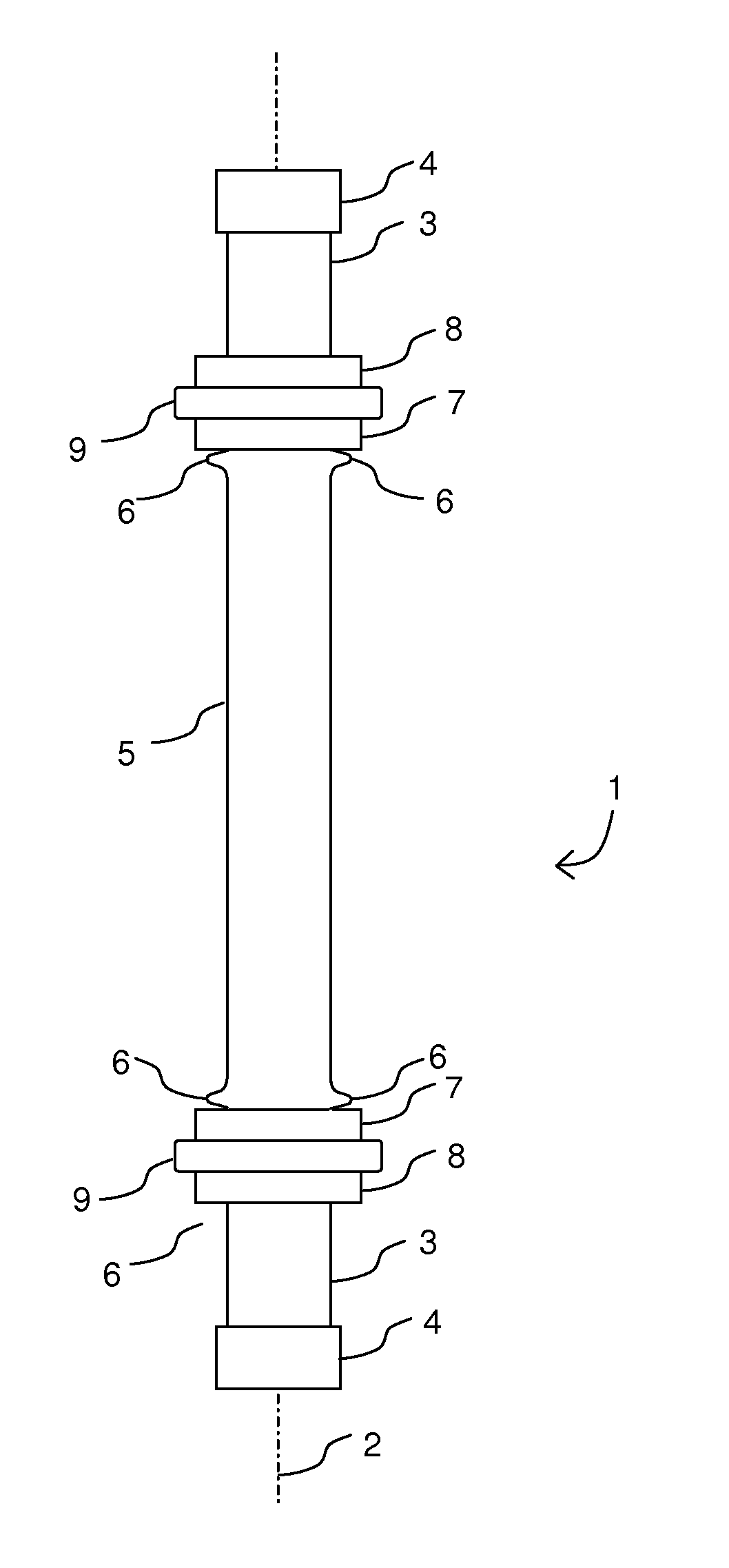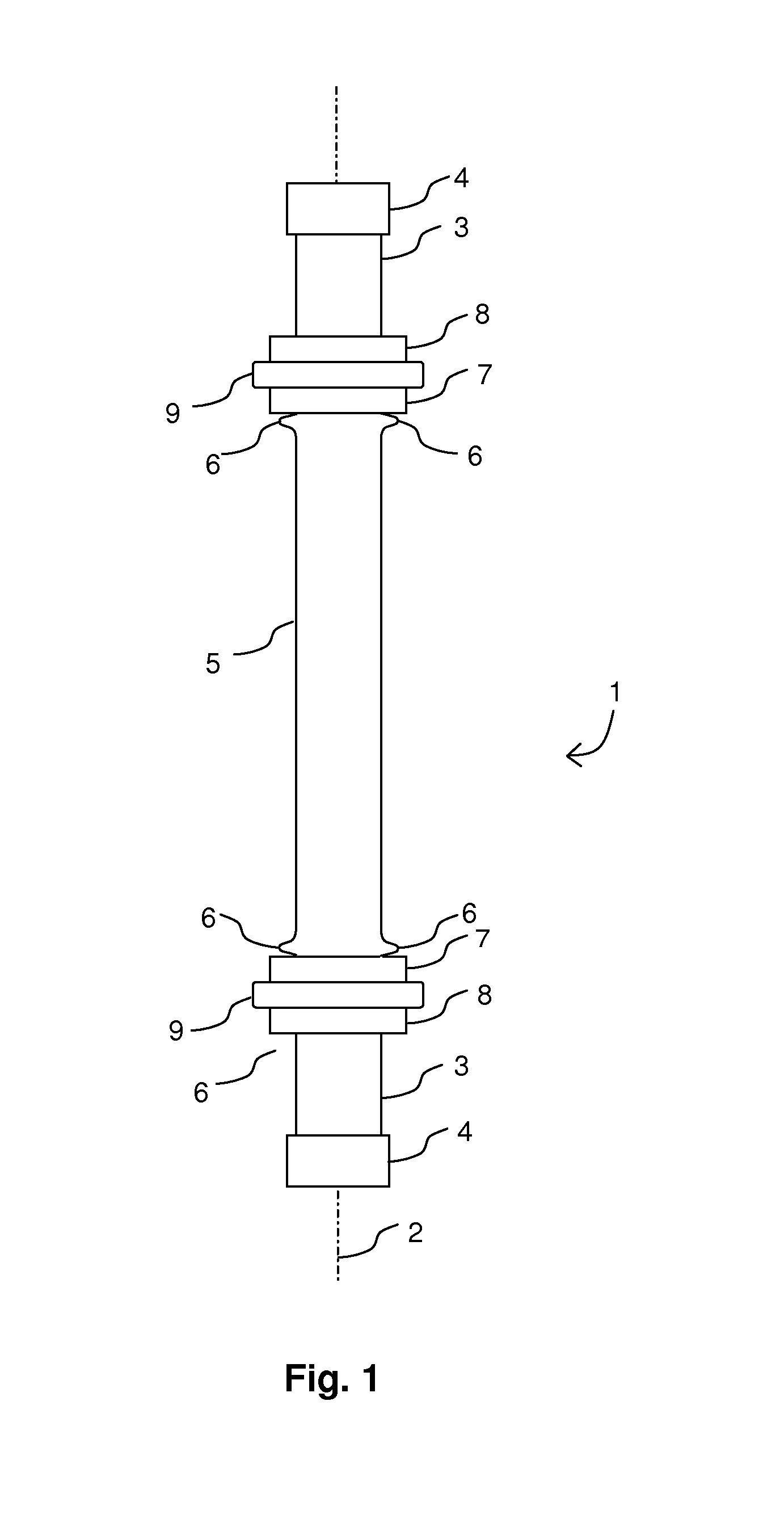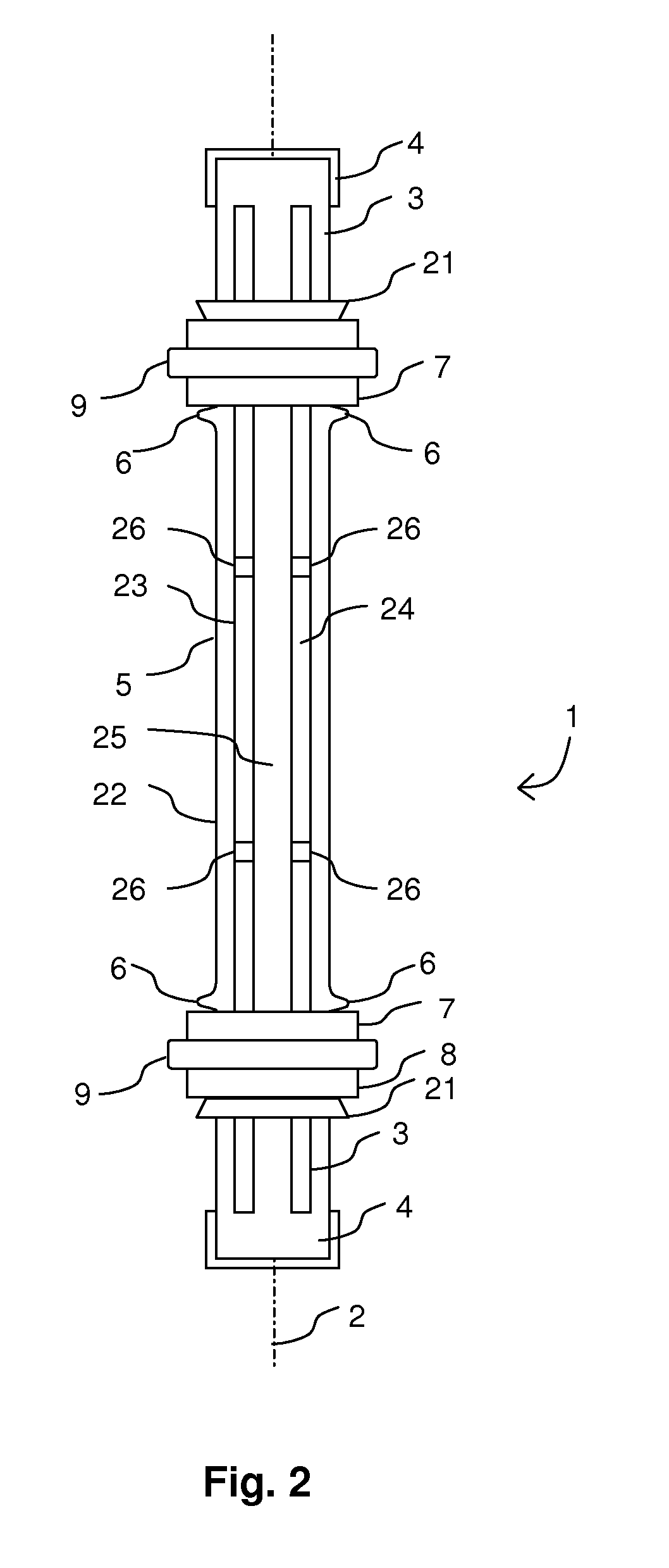High temperature roll
a high-temperature roll and rolling technology, applied in the field of rolling, can solve the problems of reducing the thermal expansion disparity of the entire roll, affecting the quality of the glass roll, so as to reduce the thermal expansion disparity and reduce the content of the shot fiber
- Summary
- Abstract
- Description
- Claims
- Application Information
AI Technical Summary
Benefits of technology
Problems solved by technology
Method used
Image
Examples
Embodiment Construction
[0022]The invention includes a roll for use in glass manufacturing. More particularly, the roll may be used as a pulling roll and has very little dusting and, therefore, restricts the formation of onclusions on the glass.
[0023]FIGS. 1 and 2 show a roll 1 of the present invention. The roll 1 includes a longitudinal axis 2 and opposite ends 3. End caps 4 cover each end 3. The body 5 of the roll 1 includes a cylinder comprising a substantially incompressible refractory ceramic, such as fused silica. The body 5 has an outer surface 22 and an inner surface 23. The inner surface 23 defines a cavity 24. The ends 3 may close the cavity 3 but, preferably, the cavity 24 remains open at either end 3. Open ends permits a metal rod 25 to extend through the cavity 24 between the end caps 4. Supports 26 hold the metal rod 25 along the longitudinal axis 2. An inner end plate 7 is adjacent to an inner retainer 6, in this embodiment, an abutment. The abutment 6 is present near each end 3. The inner e...
PUM
| Property | Measurement | Unit |
|---|---|---|
| density | aaaaa | aaaaa |
| density | aaaaa | aaaaa |
| density | aaaaa | aaaaa |
Abstract
Description
Claims
Application Information
 Login to View More
Login to View More - R&D
- Intellectual Property
- Life Sciences
- Materials
- Tech Scout
- Unparalleled Data Quality
- Higher Quality Content
- 60% Fewer Hallucinations
Browse by: Latest US Patents, China's latest patents, Technical Efficacy Thesaurus, Application Domain, Technology Topic, Popular Technical Reports.
© 2025 PatSnap. All rights reserved.Legal|Privacy policy|Modern Slavery Act Transparency Statement|Sitemap|About US| Contact US: help@patsnap.com



